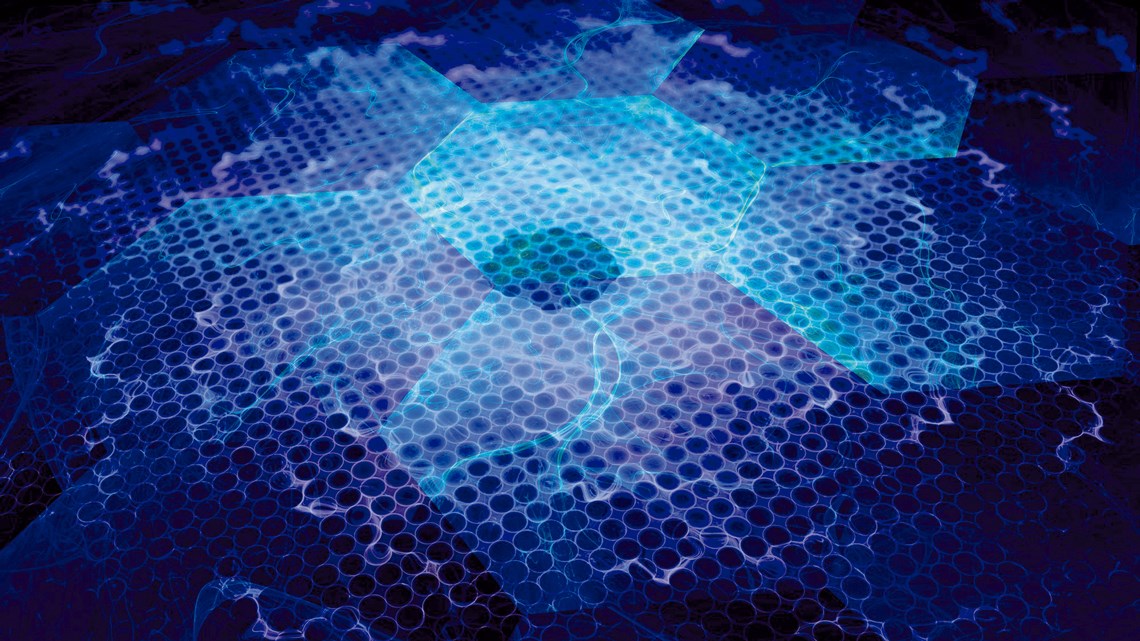A two-dimensional magnetic material that could form the basis of a new type of quantum computing appears to be more stable than it first appeared. Even after introducing small perturbations into a theoretical model that emulates its behavior, this compound—which, when supercooled, presents an exotic phase or quantum state of matter called spin liquid—maintains properties that may be essential for creating functional quantum computers.
These conclusions are outlined in an article by two Brazilian physicists published in the scientific journal Physical Review Letters in July. “Theory did not predict that this model would remain valid after the occurrence of certain disturbances in the system,” says physicist Eric Andrade, from the University of São Paulo (USP), lead author of the study, released with Vitor Dantas, Andrade’s former master’s degree student. “But we saw that the material can support from 1% to 2% of electron vacancies in its structure and still maintain its quantum properties.”
Vacancies are empty spaces at certain connection points in the internal structure of a material created by the absence of electrons. In practice, holes make some atomic bonds stronger and others weaker. This type of imperfection, or disorder, to use physics vernacular, occurs randomly in many materials. If the incidence of disorder is very high, it can change the compound’s properties.
“In nature, a material’s atoms can occupy the wrong positions. Hydrogen [which is part of the formula of the material being studied] is a very light atom and often escapes from its expected place,” comments physicist Rodrigo Pereira, from the Federal University of Rio Grande do Norte (UFRN), who did not participate in the study.
The material used in the simulations was an iridium oxide (H3LiIr2O6), which has a hexagonal, honeycomb structure similar to graphene. In experiments, this compound provided the clearest evidence of behaving as predicted by the so-called Kitaev model. Proposed in 2006 by Russian physicist Alexei Kitaev, now a professor at the California Institute of Technology (Caltech), this concept predicts the existence of a spin liquid phase in certain 2D materials—solid crystals formed by a single layer of atoms—when cooled to temperatures close to absolute zero (-273.15 °C). “Kitaev’s model is simple, which is why we worked with it,” comments Andrade.
To date, there is still no consensus among physicists that any material could actually exhibit the spin liquid quantum phase—an idea that was proposed nearly 50 years ago—although there are several promising candidates. In this state, the geometric arrangement of atoms in a material means that the spin of electrons does not follow a precise magnetic order. Spin is an intrinsic quantum property of electrons and other subatomic particles that influences their interaction with magnetic fields. It can have two configurations, which are represented as spin up and spin down. The spins of materials tend to be ordered homogeneously: they all point up or down, or alternately up and down. In the spin liquid phase, however, the angular momentum of the electrons is not fixed in one configuration, it fluctuates between different arrangements (hence the analogy with a liquid).
In this exotic state of matter, some quantum properties would intensify, a beneficial effect that could perhaps be exploited in the development of new forms of computing. Particularly interesting among these properties would be a strong degree of quantum entanglement and the presence of analogs of Majorana fermions, mysterious subatomic particles whose existence has been proposed in theory, but never proven experimentally.
Quantum entanglement causes two or more particles to be so correlated that one determines what happens to the other, even if separated by enormous distances. Majorana fermions would be quantum particles unlike any yet known. They would act as particles and as their own antiparticles simultaneously. A particle has the same mass as its antiparticle but the opposite electrical charge. This is the case, for example, of the electron (negative) and the positron (positive). “The duality of Majorana fermions could be an interesting property to be explored in quantum computing,” explains Pereira.
Since the 1980s, the idea of building computers capable of using the strange properties of quantum mechanics—such as the superposition of states and entanglement—to achieve unparalleled processing power has been a goal pursued without revolutionary results. Large companies such as Google, Microsoft, and IBM have already announced their own versions of quantum computers for restricted use on certain tasks, which are almost always shrouded in doubt and mystery.
The difficulties derive from an apparently intrinsic limitation of the proposed construction of this type of machine, namely, the lack of stability and robustness in the quantum arrangements that are necessary for its operation. Minimal changes in the environment, such as a very slight increase in temperature or subtle mechanical vibrations, cause errors in these systems. “Understanding the spin liquid phase could perhaps be useful for developing more stable quantum computers,” says Andrade.
Project
Frustrated magnets: anisotropy and inhomogeneities (no. 19/17026-9); Grant Mechanism Regular Research Grant; Principal Investigator Eric Andrade (USP); Investment R$49,329.63.
Scientific article
DANTAS, V. & ANDRADE, E. C. Disorder, Low-Energy Excitations, and Topology in the Kitaev Spin Liquid. Physical Review Letters. Vol. 129, no. 3. July 2022.
